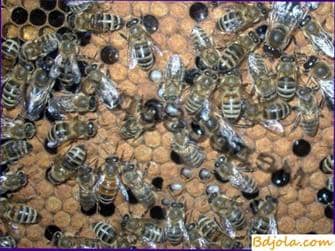
In the summer of 1988, in one family, I found 10-15 white lumps in honeycombs, but did not attach any importance to it, considering them to be a moldy pearl. In the beginning of the summer of next year in this family again I saw the same lumps, but now I already knew that these are signs of an ascetic disease.
Nystatin immediately could not buy, so he began to “invent”. In a polyethylene bottle, he poured BF-6 glue and closed it with a cork, into which he inserted a tube from a ballpoint pen. Then, squeezing the walls of the bottle, filled the cells with dead and diseased larvae with glue. So he did every four or six days several times, counting the dead larvae. The first time there were about 20, then 40, 80 and finally 140. But by that time I had already bought nystatin and, according to the dosage, twice sprinkled all the frames with the bees.
I do not know what will happen this year, but until the end of the 1989 season, I have not even found a trace of the disease anywhere.
On the ground under the tap, I found the larvae that had been lost by the bees, covered with a layer of dried glue. I think that this disinfectant coating protected the bees from recharging.
The glue processing for one family takes no more than 10-15 minutes. I advise you to check the effectiveness of my method.
Пасека на чердаке. Обработка пчел щавельной кислотой.
Diseases of bees